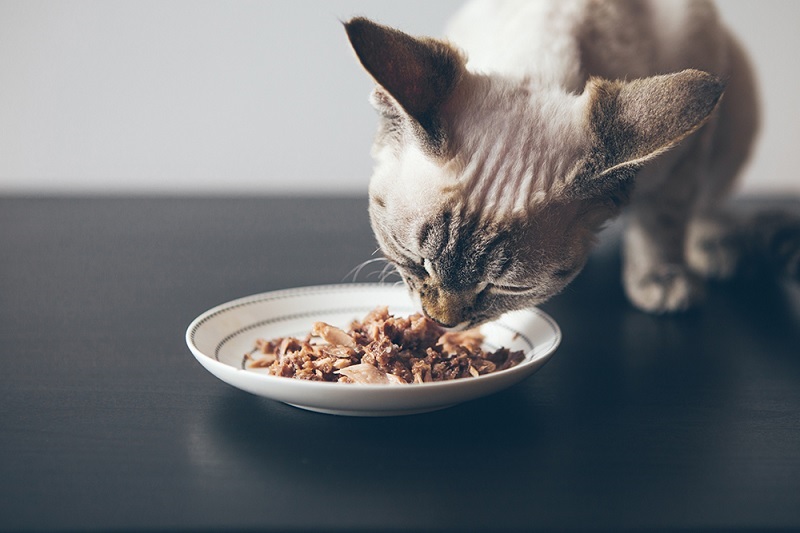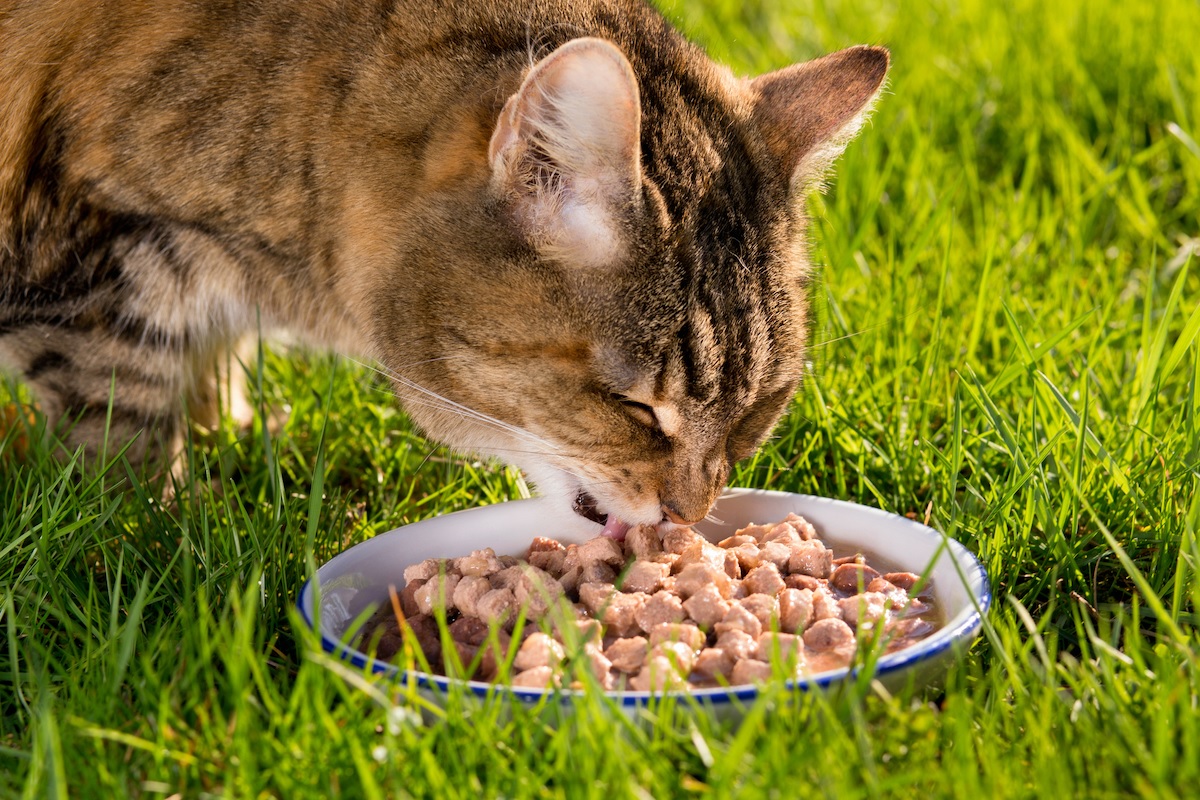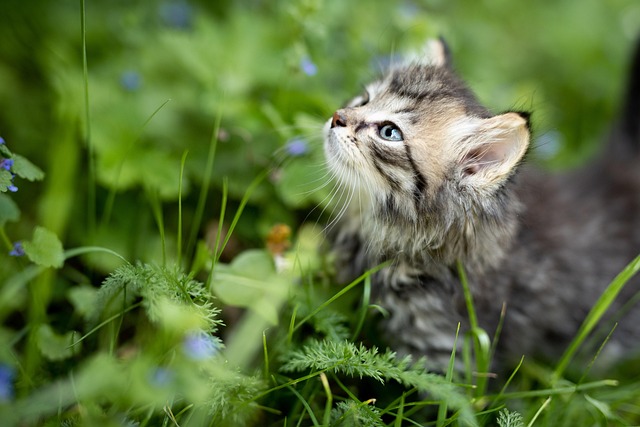Transitioning your cat from dry to wet food may seem like a daunting task, but it’s one of the best changes you can make for your furry friend’s overall health. Wet food provides more hydration, supports urinary health, and even aids in weight management.
However, cats can be quite particular about their food, so it’s important to go slow and make the process as seamless as possible for them. In this article, we’ll walk you through the step-by-step process of how to transition your cat from dry to wet food and tackle some common challenges along the way.
Why Should You Transition Your Cat to Wet Food?
You might be wondering why it’s even necessary to transition your cat to wet food. After all, many cats thrive on dry kibble, right? Well, while dry food has its advantages (such as convenience and long shelf life), wet food comes with its own set of unique benefits that could significantly improve your cat’s health.
Improved Hydration
Cats aren’t always the best at drinking water on their own. In fact, many of them prefer to get their moisture from their food, much like their wild ancestors. Wet food contains a higher water content, which can help keep your cat hydrated, especially if they’re not a fan of drinking from their water bowl.
Better for Urinary Health
Hydration plays a big role in your cat’s urinary health. Wet food helps keep your cat’s bladder and kidneys functioning properly by flushing out toxins and preventing the formation of urinary crystals or stones. This is especially important for cats prone to urinary issues or infections.
Helps with Weight Management
Wet food typically has fewer calories than dry food, meaning your cat can enjoy larger portions while still maintaining a healthy weight. It also helps with portion control since wet food comes in pre-measured portions, reducing the chances of overfeeding.
How to Transition Your Cat from Dry to Wet Food
Preparing for the Transition
Before making any changes to your cat’s diet, it’s important to assess your current feeding routine. Is your cat currently eating a well-balanced dry food diet? Does your cat have any existing health concerns that need to be considered? Answering these questions will give you a better understanding of how to approach the transition.
Consult with Your Veterinarian
Your vet is a key player in making sure this switch goes smoothly. They’ll offer guidance on the best wet food options based on your cat’s health, age, and specific needs. This is especially crucial if your cat has any dietary restrictions or underlying conditions.
Choosing the Right Wet Food
Not all wet food is created equal. When selecting a brand or flavor, make sure it’s complete and balanced, providing all the essential nutrients your cat needs. Some cats prefer certain textures, such as pate or shredded meat, so you may need to experiment to find the one that best suits your feline friend.
Start Gradually
One of the most important things to remember when transitioning your cat to wet food is to take it slow. Cats can be sensitive to changes in their diet, so introducing wet food gradually will help avoid any tummy troubles or outright refusal.
First Few Days A Small Portion of Wet Food
In the first few days, start by mixing a small amount of wet food into your cat’s regular dry food. You can begin with as little as a teaspoon of wet food to get them used to the new texture and taste. This gentle introduction will help your cat get familiar with the change without overwhelming them.
After a Week Increasing the Ratio of Wet to Dry Food
Once your cat shows signs of accepting the wet food, you can gradually increase the amount you’re offering. Over the next week, aim for a 50/50 mix of wet and dry food. This allows your cat’s digestive system to adjust without causing any disruptions.
Monitor Your Cat’s Reaction
Throughout the transition process, it’s important to keep an eye on your cat’s behavior and eating habits. Is your cat enthusiastic about the new food, or are they leaving it untouched in the bowl?
Signs Your Cat is Adapting Well
If your cat is adapting well, they’ll start eating the wet food without hesitation, and you’ll notice they’re eager to finish their meals. Their energy levels should remain stable, and their litter box habits will be normal.
What to Do If Your Cat Refuses Wet Food
Some cats are picky eaters and might refuse the wet food at first. Don’t worry, this is completely normal! If your cat is being stubborn, try warming the wet food slightly to enhance its aroma, or experiment with different flavors and textures to see what they prefer.
Overcoming Common Challenges
Transitioning your cat to wet food can come with its fair share of challenges. Many cats are set in their ways, and some might resist the switch due to texture or flavor preferences. But with a little patience and creativity, you can make the process smoother.
Strategies to Tempt Your Cat into Trying Wet Food
One of the simplest tricks is to mix a little water or low-sodium chicken broth into the wet food to make it more appealing. Cats often respond to smell, so making the food extra aromatic can do wonders in getting them to try it.
Using Warming Techniques
Cats are more likely to eat food that’s closer to body temperature because it mimics the warmth of freshly caught prey. Try warming the wet food for a few seconds in the microwave or letting it sit at room temperature before serving.
Experimenting with Different Textures and Flavors
Some cats prefer specific textures, such as pate, shredded, or chunky. If your cat doesn’t like one texture, don’t be afraid to try another. Similarly, some flavors might be more appealing than others. It might take a few tries to find the perfect match.
The Long-Term Benefits of Wet Food
Once your cat has successfully transitioned to wet food, you’ll likely notice some positive changes in their overall health and behavior.
Impact on Urinary Health
As mentioned earlier, wet food helps keep your cat hydrated, which is essential for preventing urinary tract issues. Cats who consume wet food are less likely to develop urinary crystals or infections, leading to fewer trips to the vet.
Weight Control and Management
Wet food’s lower calorie density means your cat can enjoy satisfying meals without the risk of overeating. This is especially beneficial for overweight cats or those prone to weight gain.
Promoting Better Digestion
Wet food is generally easier to digest than dry kibble, making it a great option for cats with sensitive stomachs or digestive issues. The moisture content also helps keep their digestive system moving smoothly.
Frequently Asked Questions
How long does it take to transition a cat to wet food?
The transition can take anywhere from 1 to 2 weeks, depending on your cat’s willingness to accept the new food.
Can I mix wet and dry food permanently?
Yes, many cat owners opt to mix wet and dry food for a balanced diet. Just be sure to adjust the portion sizes to prevent overfeeding.
What if my cat doesn’t like any wet food?
If your cat refuses all wet food, try experimenting with different brands, flavors, and textures. You can also consult your vet for alternatives.
Conclusion
Transitioning your cat from dry to wet food is a gradual process that requires patience, but the long-term benefits make it worth the effort. By slowly introducing wet food and monitoring your cat’s reaction, you’ll ensure a smooth transition that improves their hydration, urinary health, and overall well-being.
Remember to consult with your vet and keep an eye out for any preferences your cat may have in terms of flavor and texture.








